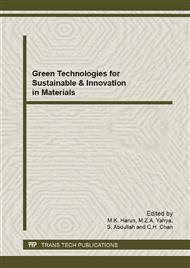p.285
p.290
p.296
p.305
p.313
p.320
p.325
p.331
p.336
Prediction of Welding Parameters and Weld Bead Geometry for GMAW Process in Overhead T-Fillet Welding Position (4F)
Abstract:
The prediction of welding parameters and weld bead geometry for GMAW process in Overhead T-fillet welding position (4F) is presented in this paper. This welding position is applied in construction of steel structures and ship building. The task to discover the range of welding parameter that can deposit quality fillet weld in overhead position is difficult, and the cost of developing them by trial and error is high. Robotic GMAW welder is employed to weld in 4F position with CO2 shielding. The current, voltage and speed as parameters, wire extension at 13mm constant. Only weld coupons are analyzed by macro-etching and the fillet geometry is plotted graphically to display the correlation with the respective welding parameter, particularly the heat input. Trend-lines with mathematical formulas are selected to develop the fillet geometry predictor. The predicted fillet geometry is validated by comparing with the values from actual welded coupons. The mean absolute deviation (MAD) of the predicting calculator is less than 1.0mm, it is therefore accurate and valid for industrial application.
Info:
Periodical:
Pages:
320-324
Citation:
Online since:
April 2013
Price:
Сopyright:
© 2013 Trans Tech Publications Ltd. All Rights Reserved
Share:
Citation:


